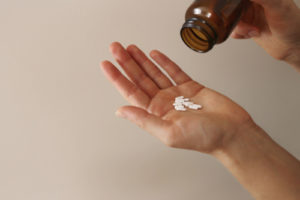One of the drugs that have contributed significantly to the current opioid crisis is Vicodin. According to the National Institute on Drug Abuse (NIDA), each day, 130 Americans lose their lives after overdosing on opioids. The misuse of opioid drugs, including other prescription opioids, synthetic opioids such as fentanyl, and heroin, have all reached levels beyond anything ever imagined.
You will be hard-pressed to find someone in the United States who hasn’t been affected one way or another by opioids, and it is common for some communities to experience mass loss of life. Vicodin is prescribed at a much higher rate than any other opiate in the country. It is available in tablet form, syrup, capsules, and liquid.
While the risk for abuse of this narcotic pain reliever is widely known, the drug is abused on a vast scale. Those who need it for pain relief can still become dependent on the drug, which can lead to addiction. The long-term abuse of Vicodin is seen as abusing two different drugs — hydrocodone, which is the active ingredient in Vicodin, and acetaminophen. Individually, each drug carries a potential risk of injury to the body.
One of the primary concerns about heavy usage of Vicodin is the pain reliever acetaminophen that is inside of a Vicodin pill. Abusing the drug puts the user at risk of severe liver damage or organ failure from acetaminophen poisoning. Many adverse effects can occur as a result of hydrocodone alone, but including acetaminophen only increases the likelihood of injury.
Withdrawal Symptoms for Vicodin
Vicodin is an opioid drug, which falls under a wide range of substances that ranges from heroin to morphine. These drugs are all considered central nervous system (CNS) depressants. Some factors affect the timeline of withdrawal and the types of symptoms someone will experience. Vicodin withdrawal symptoms typically come in two phases — the initial period of withdrawal will mimic the common cold, but the following stage will replicate more flu-like symptoms.
Physical Symptoms
Physical symptoms are notorious with opiate withdrawal, but they can also include emotion and psychological symptoms. Agitation, as well as anxiety, can accompany the initial phase along with depression in the second phase. There have been confirmed reports of those struggling with suicidal thoughts as they battle depression of Vicodin withdrawal, but immediate medical attention is recommended if this occurs. Reporting these thoughts to a doctor or addiction specialist can be the difference between life or death.
The initial phase of Vicodin withdrawal symptoms include:
- Anxiety
- Agitation
- Increased tearing
- Body aches
- Runny nose
- Insomnia
- Hot and cold flashes
- Sweating
- Dehydration
- Confusion
- Lethargy
The following phase is when the symptoms will peak and become nearly unbearable. These symptoms include:
- Diarrhea
- Cramping
- Goosebumps
- Pupil dilation
- Nausea
- Vomiting
As with most drugs, intense cravings are the most pronounced symptoms of withdrawal. When it occurs in conjunction with other withdrawal symptoms, it makes it challenging to accomplish abstinence on your own.
Vicodin withdrawal symptoms do not pose severe risks such as benzodiazepines or alcohol, but they are strong enough to make it difficult to get through on your own. Vicodin withdrawal is hard to go through alone, and it is relatively common to relapse when the process occurs without the help of medical professionals. Medical detoxification is the most reliable and efficient means of overcoming an addiction to Vicodin.
Varying Symptoms and Their Consequences
The Vicodin withdrawal symptoms experienced directly relate to the level of chemical dependency. The symptoms of Vicodin withdrawal will vary and can range from mild to severe based on several factors. These factors include how long the drug has been abused, how much of the pill consumed, and the dosage one becomes tolerant to. The size of the last dose consumed will also play a role.
The symptom most associated with Vicodin withdrawal is a severe craving for the drug. Vicodin cravings can lead to drug-seeking behavior, such as looking for alternative opioids, such as oxycodone or heroin. During this time, the user could be inclined to use any opioid drug that is available. It can be dangerous because as the tolerance decreases and stronger opioids are consumed, it can lead to an overdose.
Cold-like symptoms in the beginning stages will be the first to present themselves and last a few days. At the 72-hour mark, the symptoms will be at their worst and feel like the worst flu you’ve ever had. As time progresses, the severity of these symptoms will gradually decrease. Most symptoms will dissipate after a week; depression, fatigue, insomnia, and anxiety will still be present for up to a month or more.
If these symptoms continue to persist over a month, you must speak with an addiction specialist. It could be what is referred to as post-acute withdrawal syndrome (PAWS), and you must discuss with a specialist familiar with how to properly treat the symptoms. PAWS is extremely common after long-term opioid abuse, and the length it occurs can vary from one person to another.
Should I Detox?

Vicodin withdrawal can be uncomfortable enough to push someone right back into using the drug. Often, those who go back to a drug after they tried to quit will consume their usual dose, and the problem is that the tolerance in their body has dropped, and this can lead to an overdose.
Vicodin withdrawal is not deadly, but it can cause dehydration. If you experience diarrhea, vomiting, confusion, or extreme fatigue, it can be followed by a dangerous situation. Dehydration requires specialized medical care.
Detox will hold you accountable for your commitment to transitioning into a sober lifestyle, and medical professionals will help ease the symptoms with anti-anxiety medications safely and comfortably.
Attempting this process on your own increases the dangers and can bring forward psychological symptoms that may not have been planned for. A caring, professional staff can help keep you on track through the detox process.
Seeking Vicodin Addiction Treatment
The sole intention of detox is to clear your body of any intoxicants or foreign bodies, but it is not enough to maintain sobriety. It is imperative to continue ongoing care and stay in treatment long enough for the chance at lasting recovery. A minimum of three months is necessary to give yourself the best chance at long-term sobriety, but the specialists will determine what the best outcome for you is.
The continuum of care refers to addiction recovery that encompasses all stages of care. It starts in detox, and then can be followed by either residential treatment, intensive outpatient, or outpatient treatment, and then slowly decreases in intensity. During a stay in addiction treatment, various therapies will be customized based on the client’s current needs.
The ideal treatment center will ensure your addiction support is long-term. The lasting commitment will be the solidifying factor that helps ensure lifelong sobriety.
National Institute on Drug Abuse. (2019, January 22). Opioid Overdose Crisis. Retrieved from: https://www.drugabuse.gov/drugs-abuse/opioids/opioid-overdose-crisis


